Sadhaura Gurdwara: Peer Budhu Shah's Unwavering Devotion and Loyalty to "Dashmesh Pita".
A Sacred Union of Devotion and Heritage, Echoing the Spirit of Sri Guru Gobind Singh Ji's Teachings at Sadhaura Gurdwara
My visit to Sadhaura: Today1, I had the fortuitous privilege of visiting Sadhaura, a historic town in the Yamunanagar district2 of Haryana, where a small but magnificent Gurudwara stands at the birthplace of Peer Budhu Shah, a testament to his profound devotion of for Sri Guru Gobind Singh Ji. As a humble Sikh, this impromptu pilgrimage was a deeply moving and emotional experience, allowing me to connect with the rich history of our faith and the sacrifices made by those who stood for justice and freedom.
Peer Budhu Shah: Sadhaura, situated on the left bank of river Markanda, holds a special place in Sikh history due to the unwavering fidelity and the ultimate sacrifice of Peer Budhu Shah, a Muslim, whose real name was Badr ud Din. Born in Sadhaura into a prosperous Sayyid family on June 13, 1647, Peer Budhu Shah was not only an admirer of Guru Gobind Singh Ji but also his staunch ally. His path intersected with that of the Guru, and a deep bond formed between them.
The Peer comes to the Guru’s Darbar: As I walked through the main hall of the historic Gurdwara, I could feel the echoes of the past, resonating with the devotion and bravery displayed by Peer Budhu Shah. It is said that he visited the Guru regularly, seeking spiritual guidance and finding solace in the Guru's presence. In 1685, he made his first visit to Guru Gobind Singh Ji at Paonta (now Paonta Sahib), on the banks of river Yamuna, where the Guru was staying at that time. On his way back from Paonta to Anandpur in 1688, while stopping over at Kapal Mochan, Guru Gobind Singh ji also visited the Peer at Sadhaura. From that point forward, the visits of Budhu Shah to the Guru became routine, transcending the barriers of religion and demonstrating the universal message of love and respect that Guru Sahib espoused.
Peer Budhu Shah presents his sons to Sri Guru Gobind Singh ji (pic off internet)
Battle of Bhangani: Peer Budhu Shah's devotion reached its zenith during the Battle of Bhangani in 1688. When the Guru faced a combined force of the confederacy of the Rajput hill rajas, led by Raja Bhim Chand of Kuhlar (Bilaspur) and supported by Fateh Shah3 of Garhwal and Kangra chieftains, the Pathan soldiers who had earlier been recommended by Peer Budhu Shah deserted the Guru's army, leaving him in a precarious situation. Witnessing the predicament of the Guru's forces, the Peer's love and loyalty for Guru Gobind Singh Ji stirred him and moved him to bring hundreds of his own followers and family members to join the Guru's ranks. It was indeed a display of unparalleled dedication, courage and support, since this was not only an act of hostility towards the hill rajas but was also bound to displease the local Mughal “faujdars”, who would see it as a rebellious move.
Battle of Bhangani (pic off internet)
Peer Budhu Shah’s ultimate sacrifice: In the pitched battle, two of Peer Budhu Shah's sons, along with many of his followers, laid down their lives fighting for the Guru. The battle took place in 1688 near the village of Bhangani (near Paonta Sahib) in the present-day state of Himachal Pradesh, India. Despite being outnumbered, Guru Gobind Singh Ji and his Sikh warriors, including the sons and soldiers of Peer Budhu Shah, displayed exceptional valour and strategic prowess, emerging victorious in the face of adversity. The Battle of Bhangani played a significant role in establishing the Guru's reputation as a courageous leader and defender of righteousness.
Photo click from a painting in the Gurdwara
For the Peer, the pain of losing his loved ones must have been unimaginable, yet his commitment to the Sikh cause remained unwavering. The Guru, recognizing the depth of Peer Budhu Shah's sacrifice, bestowed upon him his comb4 (enmeshed with his hair) and ‘dastar’, precious items that symbolized the Guru's blessings and love.
Budhu Shah’s Execution by the Mughals: The story took a grim turn when the cruel hand of the tyrannical Mughals intervened. The Nawab of Sadhaura, Usman Khan, executed Peer Budhu Shah on March 21, 1704, torturing for his unwavering support of Guru Gobind Singh Ji. This act of brutality not only revealed the extent of cruelty under Mughal rule but also became a catalyst for future events.
Baba Banda Singh Bahadur: Banda Singh Bahadur, the fearless and devoted Sikh warrior appointed by Guru Gobind Singh Ji himself, while he was camping at Nanded in the Deccan. Banda Bahadur was dispatched to teach Wazir Khan, the Nawab of Sirhind, who had been squarely responsible for the martyrdom (‘shahadat’) of the two younger “sahibzadas”. On way to his ultimate destination, when he learned about the execution of Peer Budhu Shah, Banda Singh Bahadur, driven by a sense of justice, led a victorious march to Sadhaura. In 1709, he conquered the town, avenging the Pir's death by executing Usman Khan, the cruel “faujdar” responsible for the atrocities committed against Peer Budhu Shah.
Aftermath of the Battle of Sadhaura: This conquest was not merely an act of revenge but a kind of divine retribution, a reminder that injustice and tyranny cannot go unpunished. It stands as a testament to the unwavering spirit of Sikhism, which espouses the principles of standing against oppression and fighting for the rights of all. Guru Gobind Singh Ji's teachings emphasize the importance of defending righteousness, and the expedition of Banda Singh Bahadur was simply the discharge of that sacred duty which the Guru had consigned in him. From a military perspective, it was just one important point of consolidation for Banda Bahadur, before the crucial Battle of Chappar Chiri and the victorious march to Sirhind, where the Governor (Subedar) of Sirhind, the infamous Wazir Khan was to meet his inevitable fate.
Sadhaura Gurudwara, nestled right in the middle in the historic town of Sadhaura, this holds immense significance in Sikh history and stands as a testament to the unwavering devotion of Peer Budhu Shah. Constructed at what is widely believed to be his birthplace, the Gurudwara serves as a place of reverence and homage for people from among all faiths to his immense and selfless contribution to the Guru’s mission. It has been constructed by a registered society of the local residents and is managed by the same.
The architecture of Sadhaura Gurdwara reflects the rich Sikh heritage and showcases a blend of traditional and modern elements. The complex is adorned with vibrant colors, intricate carvings, and ornate domes that symbolize the spiritual essence of Sikhism. The main prayer hall, known as the Darbar Sahib, provides a serene and sacred space for devotees to come together and engage in prayer and contemplation.
Gurdwara Interior: Inside the Gurdwara, the Guru Granth Sahib, the holy scripture of Sikhism, is beautifully adorned and placed on a raised platform called the Manji Sahib. The Manji Sahib is intricately decorated with embroidered fabrics and colorful floral arrangements, signifying the reverence and respect for the Guru's teachings.
Gurbani Kirtan: As devotees enter the Gurdwara premises, they are greeted by the soothing sounds of Gurbani Kirtan (spiritual hymns) that fill the air, creating an atmosphere of spiritual tranquility. The architectural layout of Sadhaura Gurudwara encourages community participation and fosters a sense of unity among visitors, regardless of their religious backgrounds.
Symbol of the ultimate devotion: The Gurdwara stands as a living tribute to his selfless devotion and loyalty of the Muslim Peer to "Dashmesh Pita" Sri Guru Gobind Singh Ji. It serves as a spiritual sanctuary where devotees can seek inspiration, reflect upon the teachings of Guru Gobind Singh Ji, and pay homage to the rich Sikh heritage that Peer Budhu Shah embodies.
My thoughts and emotions: As I stood in the Gurdwara, surrounded by the echoes of history, I was struck by the universal message of brotherhood and peaceful coexistence that Guru Gobind Singh Ji imparted. The sacrifices made by Guru Sahib and his followers, including countless ones like Peer Budhu Shah, serve as a reminder that standing against injustice is not to be limited to one’s own faith, religion or community but is a duty shared by all humanity. The legacy of Sadhaura and the indomitable spirit of Peer Budhu Shah inspire us to be vigilant against oppression and to work towards a world where justice and compassion prevail. The Gurudwara at Sadhaura stands as a symbol of this struggle, a place where devotees from all walks of life can come together and seek solace in the teachings of Guru Gobind Singh Ji.
In the adjacent street— stated to be with birthplace of Peer Budhu Shah. Now being conserved by the local committee.
Leaving with a sense of immense gratitude: Leaving Sadhaura, I carry with me a renewed sense of purpose and a deep appreciation for the sacrifices of those who came before us. Visiting this sacred place has deepened the my innate resolve to uphold the universal values enshrined in Sri Guru Granth Sahib and to stand up united against all forms of injustice. May we strive together to foster a world where love, peace, and justice reign supreme, just as Sri Guru Gobind Singh Ji envisioned.
Parting Note: Finally, I was reminded of the Persian verse penned by Sri Guru Gobind Singh Ji, as a part of “Zafarnamah”, his famous spiritual victory letter to Emperor Aurangzeb:
“Chu kar az hama heelt e dar guzshat, Halal ast burdan ba shamsheer dast.”5
Punjabi: ਚੂ ਕਰ ਅਜ਼ ਹਮਾ ਹੀਲਤ ਐ ਦਰ ਗੁਜ਼ਸ਼ਤ, ਹਲਾਲ ਅਸਤ ਬੁਰਦਨ ਬਾ ਸ਼ਮਸ਼ੀਰ ਦਸਤ।
In the overall context of Guru Sahib's historic victory letter to Aurangzeb, these words remind us that while our pursuit of righteousness must be grounded in peaceful resolutions, there may be rare moments when raising the sword becomes the ultimate resort against an unyielding tyrant. Let us hold these teachings close as we strive for a world where conflicts are resolved through dialogue, compassion, and understanding. Embracing the path of peace, we foster unity amidst diversity, nurturing a future where love and harmony triumph over violence and discord. Together, let us build a just world where justice prevails, and peaceful coexistence becomes the cornerstone of our collective journey.
30th June, 2023.
Formerly in the undivided Ambala district.
Son-in-law of Raja Bhim Chand.
It has stated to be preserved in Hira Mahal at Nabha. Was seen till 1990.
“Chu kar az hama heelt e dar guzshat, Halal ast burdan ba shamsheer dast.”
Hindi: चू कर अज़ हमा हीलत ए दर गुज़शत, हलाल अस्त बुरदन बा शमशीर दस्त।
Punjabi: ਚੂ ਕਰ ਅਜ਼ ਹਮਾ ਹੀਲਤ ਐ ਦਰ ਗੁਜ਼ਸ਼ਤ, ਹਲਾਲ ਅਸਤ ਬੁਰਦਨ ਬਾ ਸ਼ਮਸ਼ੀਰ ਦਸਤ।
Urdu/ Persian: چو کار از همه حیلت در گذشت حلال است بردن با شمشیر دست
Translation:
English: "When all means have failed, it is righteous to draw the sword."
Hindi: "जब सभी साधन विफल हो जाएं, तब तलवार उठाना धर्मनिष्ठ होता है।"
Punjabi: "ਜਦੋਂ ਸਾਰੇ ਤਰੀਕੇ ਨਾਕਾਮ ਹੋ ਜਾਣ, ਤਾਂ ਕਿਰਪਾਨ ਚੁੱਕਣਾ ਤੁਹਾਡਾ ਧਰਮ ਹੁੰਦਾ ਹੈ।"
_________________________________________________________________________________
Travel Tips:
If travelling from Chandigarh, go via Raipur Rani- Naraingarh. Google Maps may not always be very reliable. (https://goo.gl/maps/8DEcVjrYzGnCnHRZ8
Don’t try to take your vehicle into the narrow streets— park it at a distance. Walk. It will also give you a better feel of the city interior.
Don’t miss the original birthplace in the adjacent street, currently in ruins but being resurrected and conserved. The gentleman with me in the pic is Gurpreeet Singh, whose family is fully involved in the sewa of the Gurdwara. This grandfather had migrated from Pakistan in 1947. I may come out with a full-fledged article on the conservation project, with photos and videos soon.
Don’t miss Gurdwara Qila Lohgarh Sahib , Sadhaura, closeby— on the main road. (https://goo.gl/maps/H2SSQ5ZfN14c2jBA6)
Shall try and upload YouTube shorts soon. Keep checking this post. (NEW! Uploaded. Check the links below)
Have uploaded a 16-page information brochure in Punjabi (Gurmukhi script) prepared by the local committee, after converting it into pdf format. Click on the link to read.
(https://acrobat.adobe.com/id/urn:aaid:sc:AP:c6e96e92-0f19-4f3e-bf65-f027e0f70005)
Link to YouTube “Shorts” Videos: (These are now public— copy the link if you want to share with friends.)
https://www.youtube.com/playlist?list=PLUZha0-2LLO0ESfnOHl2G22b1uOh0i4uc
(To open. Highlight. Right click. Choose the option ‘Go to’)

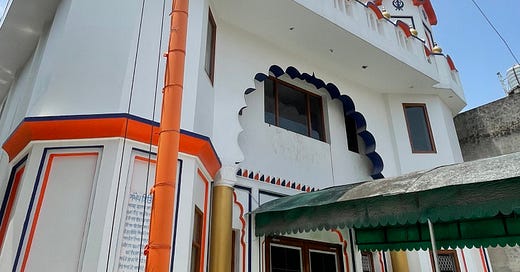



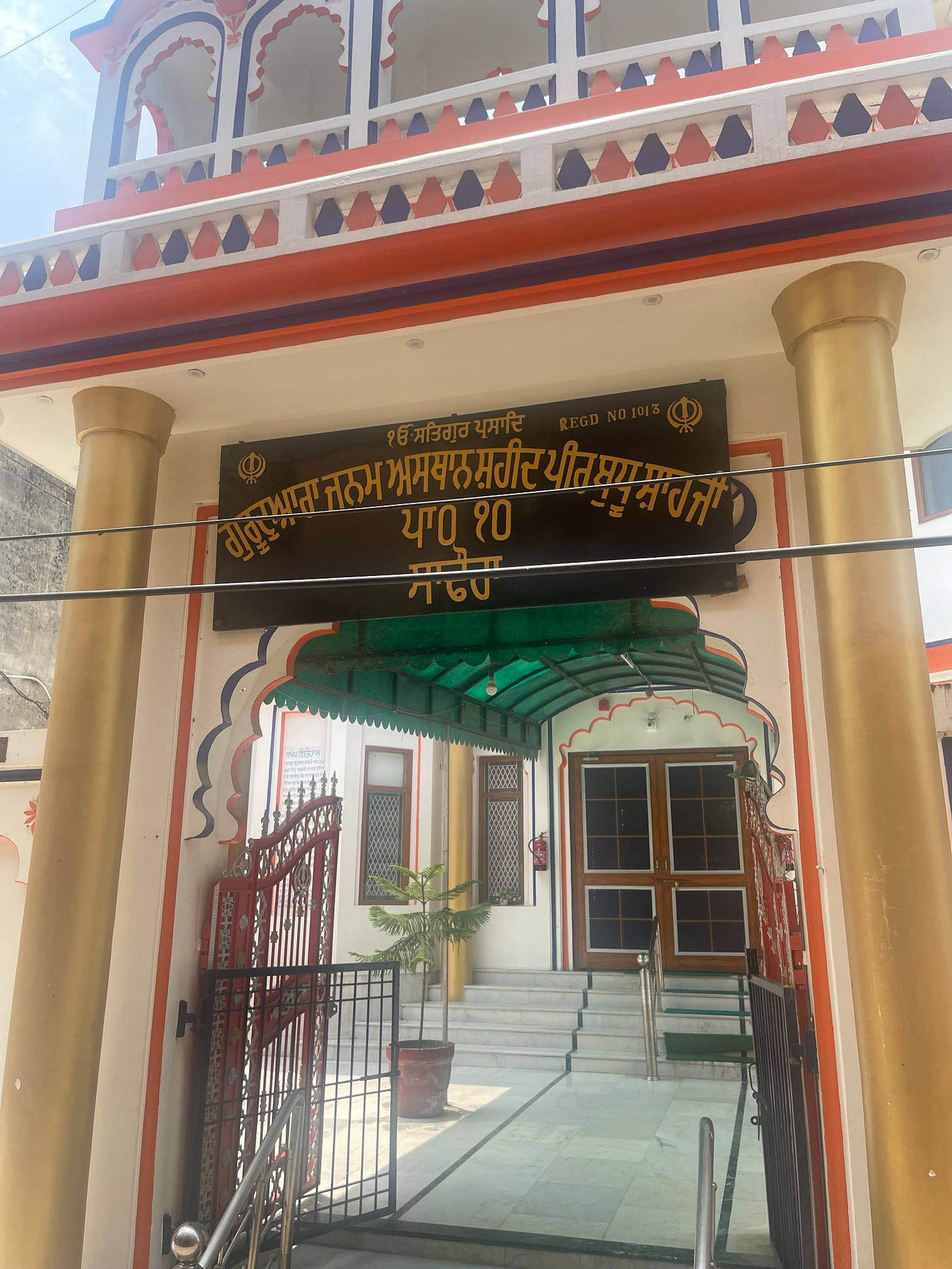
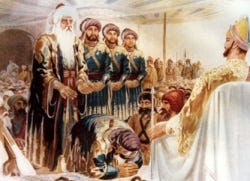
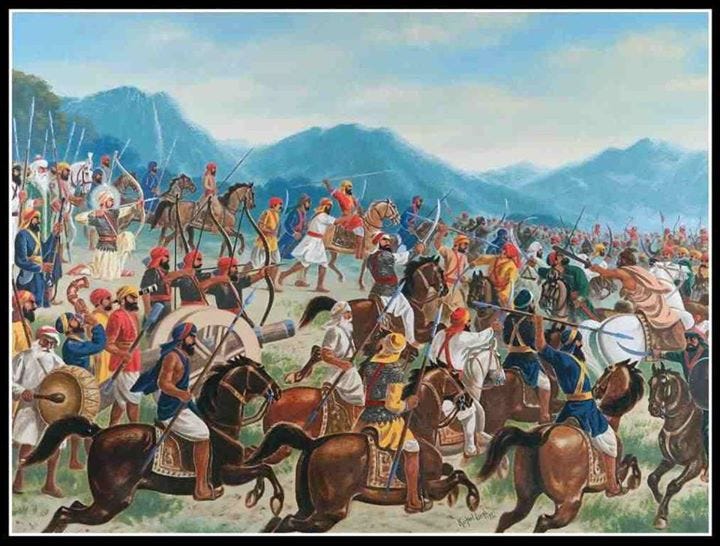
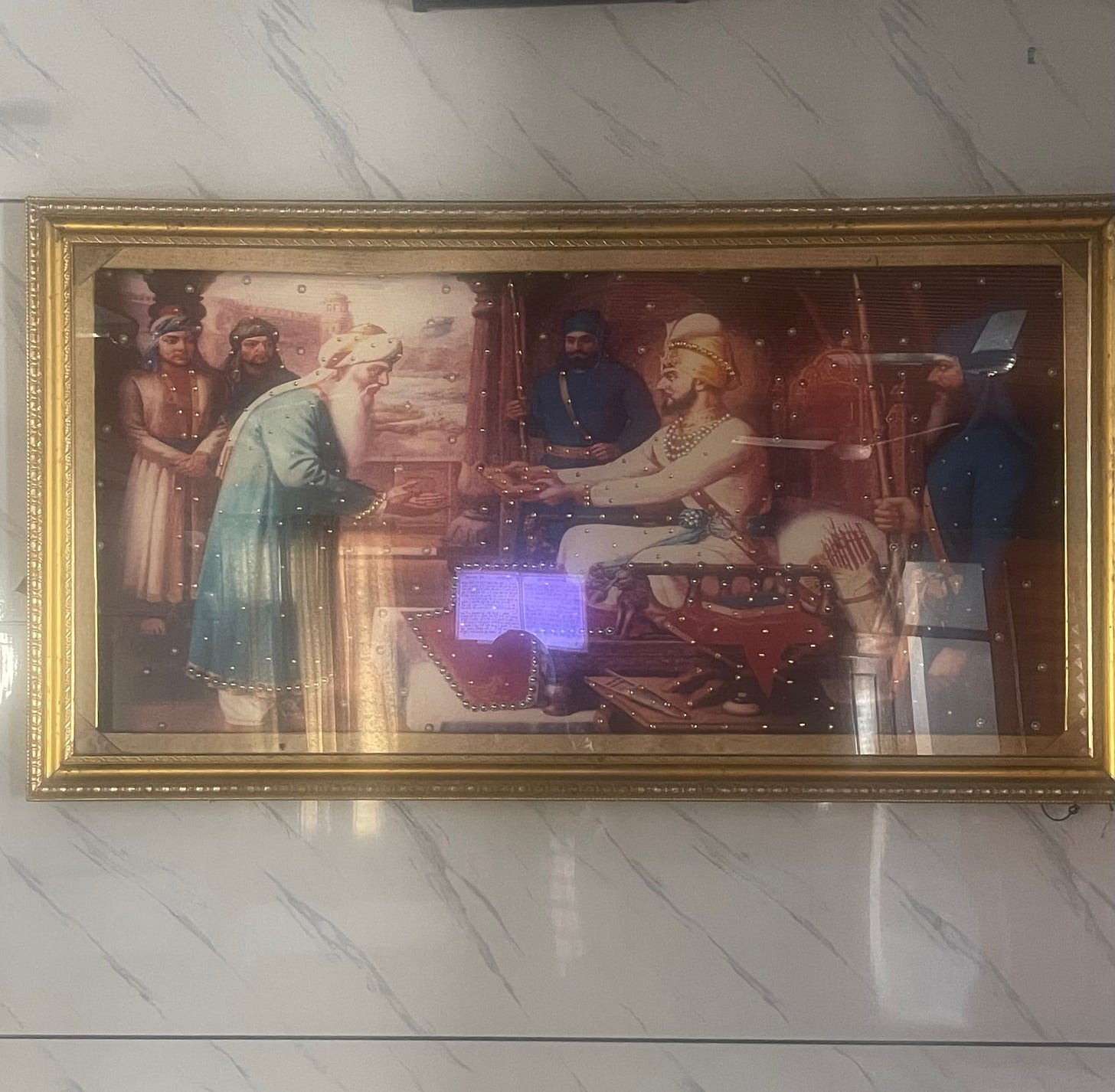
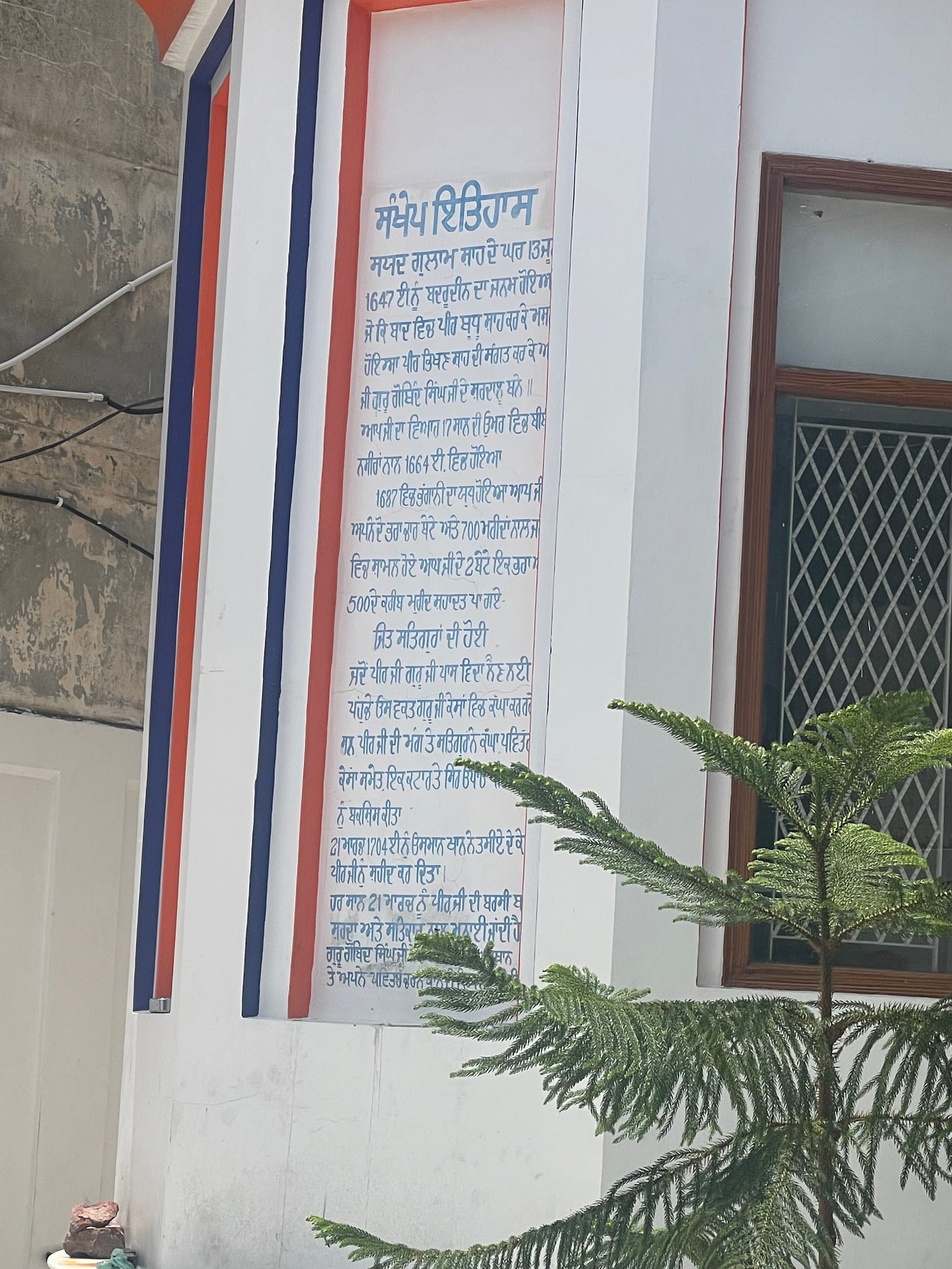
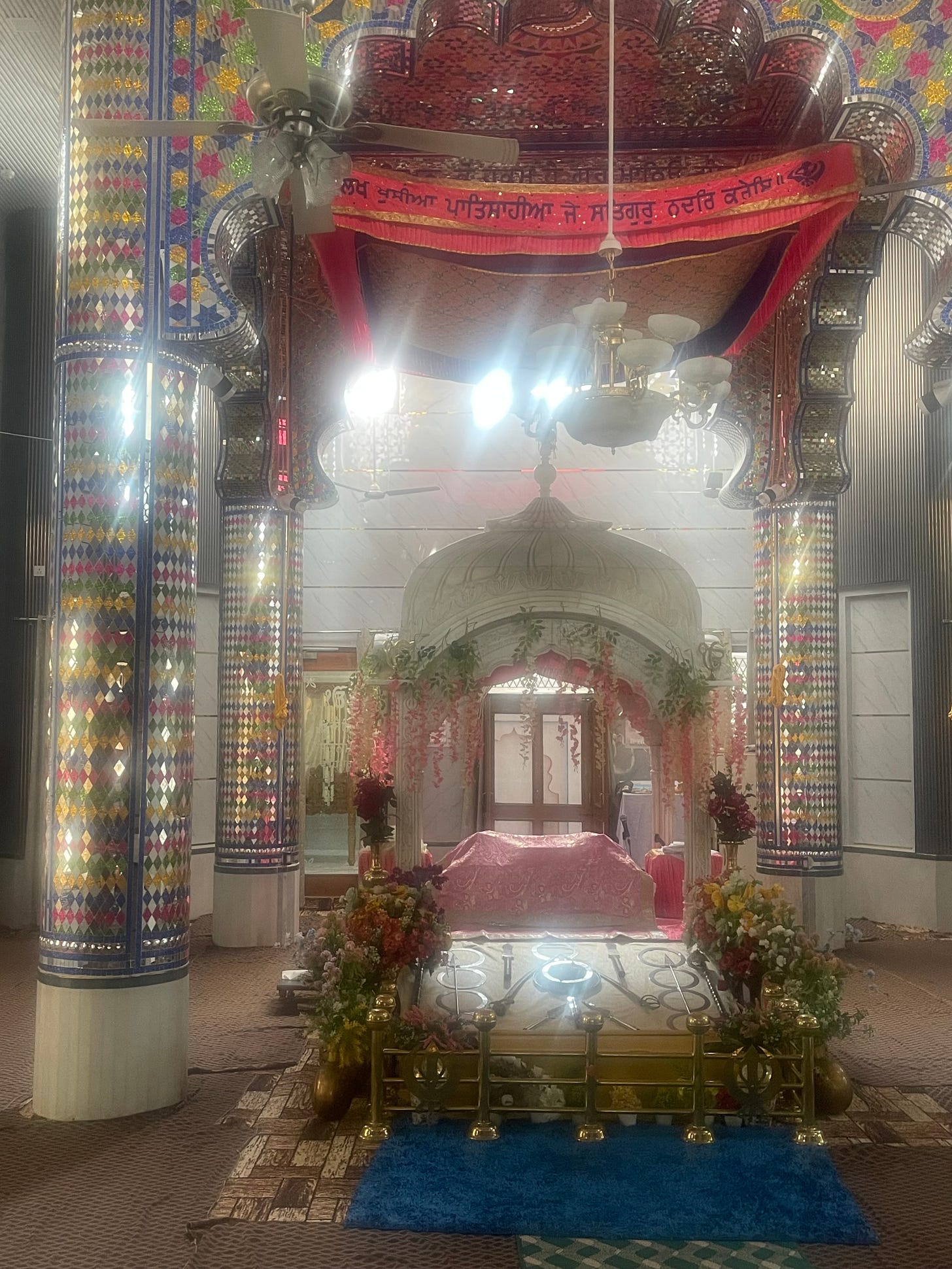
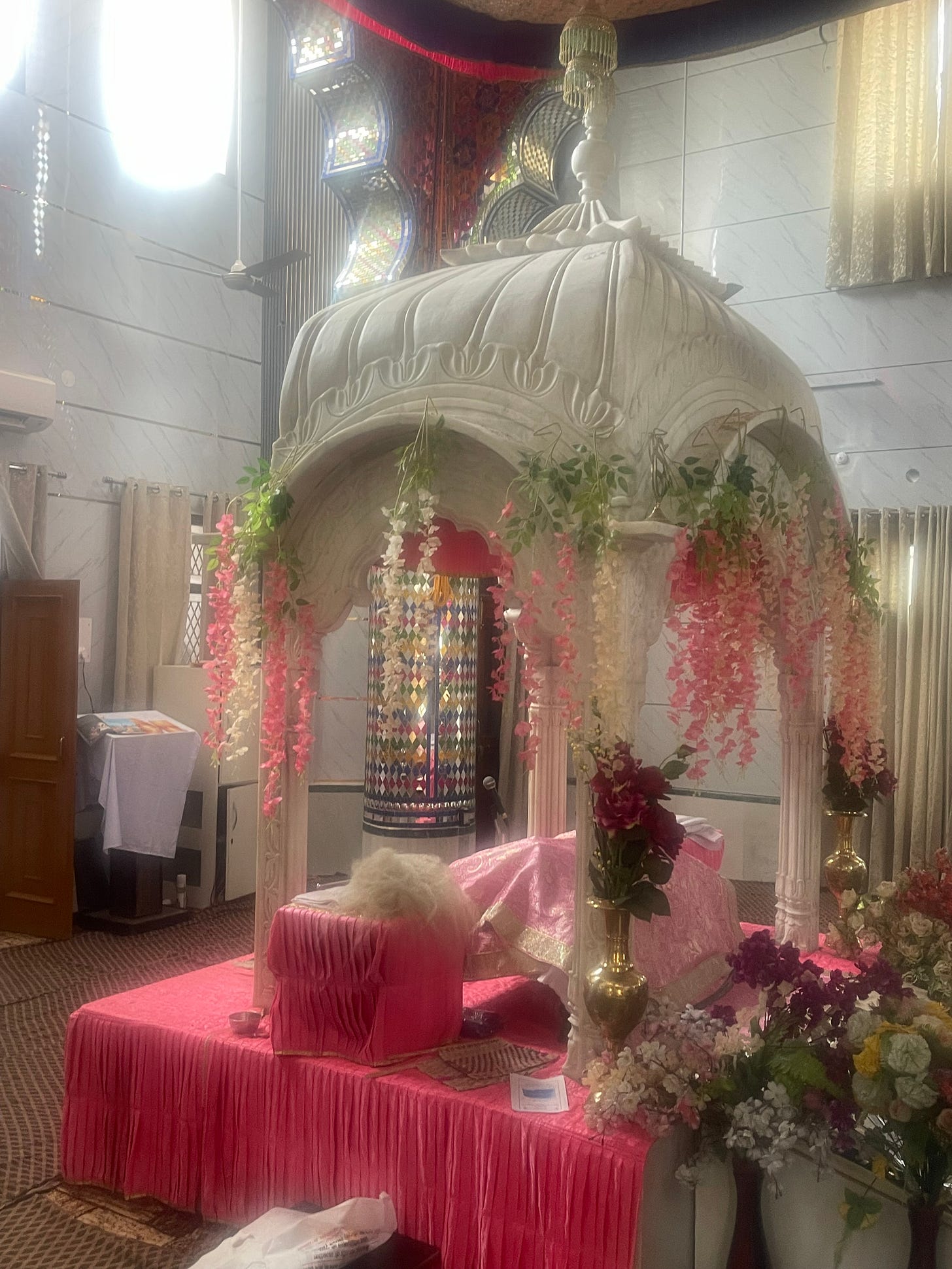
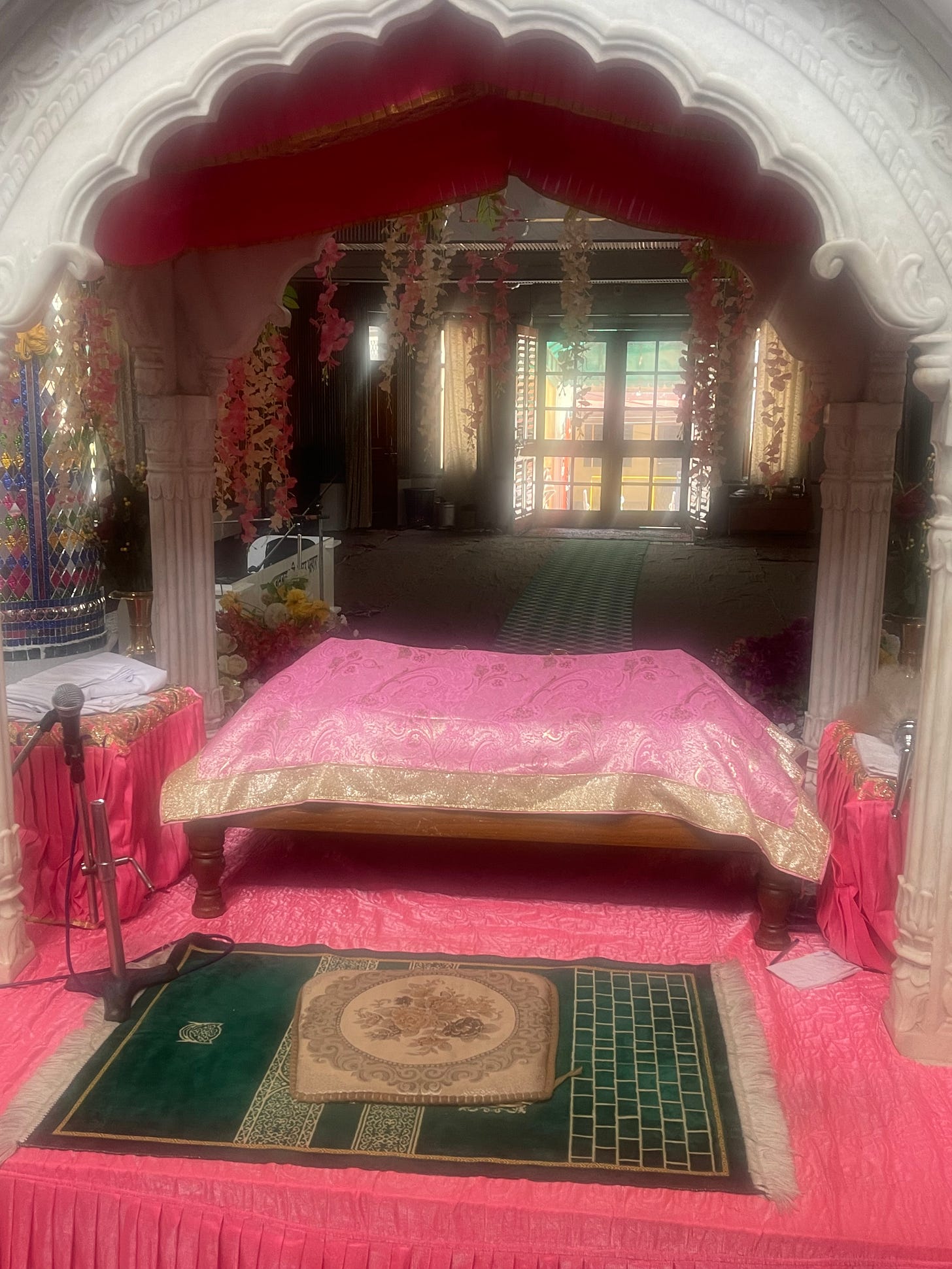
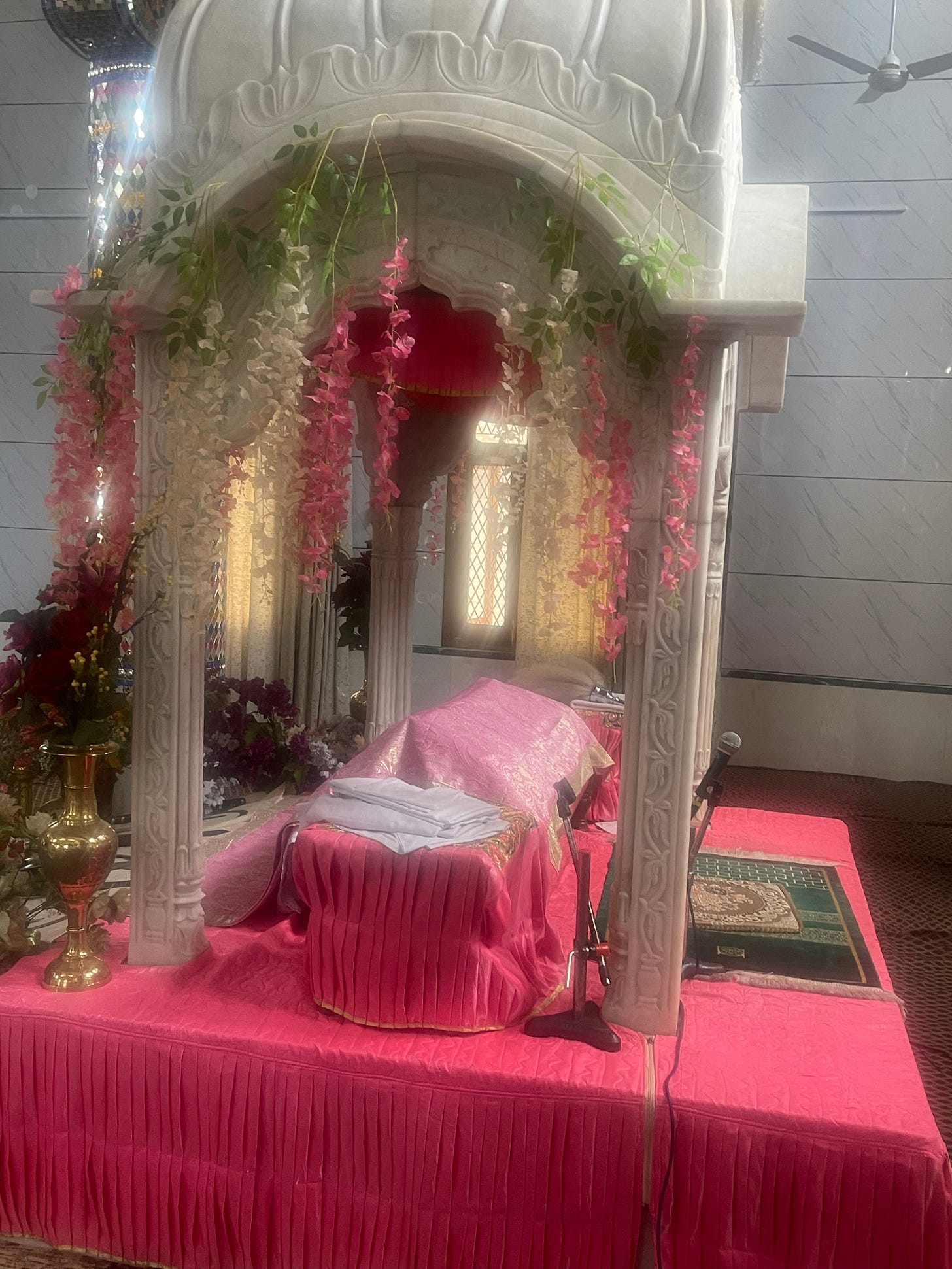
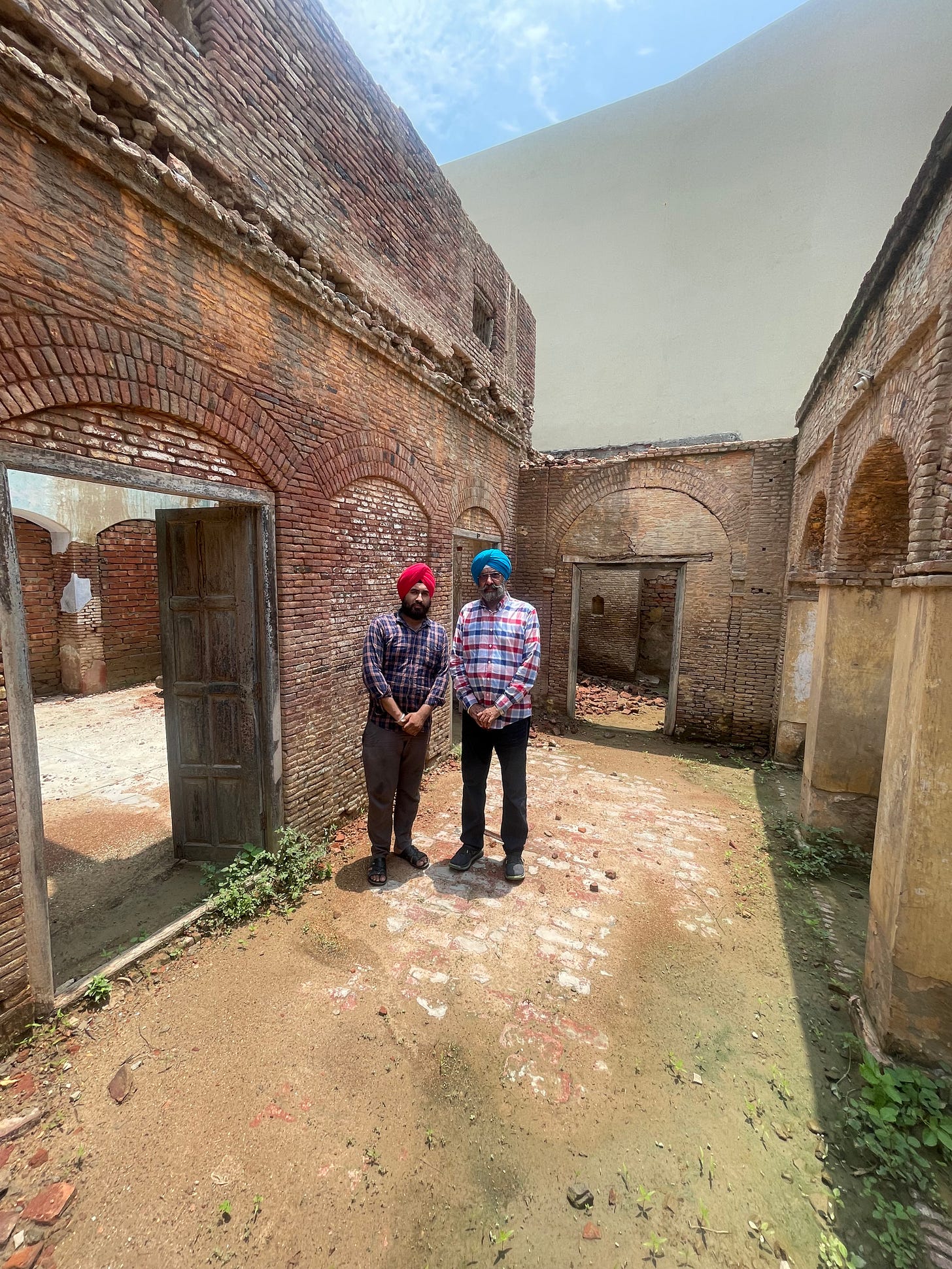
Very good write up with pictures and historical facts and events. Many facts are new for me. Great contribution in history of sikhs
Excellent narrative of great sacrifice by Peer ji. Reading this made my eyes wet. Well written. Such type of article is the need of the present. God bless you.